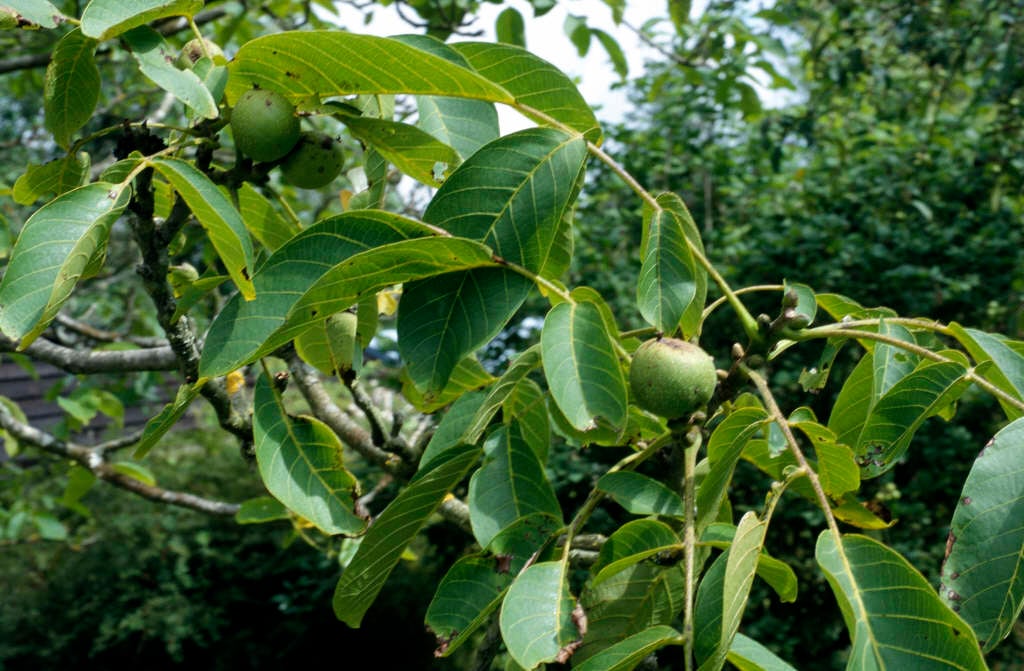Juglans regia (F)
common walnut
A medium-sized, broad-crowned deciduous tree. Leaves with 5-7 large oblong leaflets, aromatic when bruised. Male catkins to 10cm in length; fruits green, globose, 5cm in width, with edible kernel
Other common names
ban-nut treeBlack Sea walnut
see moreEnglish walnut
French nut
Madeira nut
Persian walnut
Welsh nut
Synonyms
Juglans sinensisSize
Ultimate height
Higher than 12 metresTime to ultimate height
20–50 yearsUltimate spread
Wider than 8 metresGrowing conditions
Moisture
Moist but well–drained, Well–drainedpH
Acid, Alkaline, NeutralColour & scent
| Stem | Flower | Foliage | Fruit | |
| Spring | Green | Purple | ||
|---|---|---|---|---|
| Summer | Green | |||
| Autumn | Green | Green | ||
| Winter |
Position
- Full sun
Aspect
East–facing or South–facing or North–facing or West–facing
Exposure
Exposed or Sheltered Hardiness
H6Botanical details
- Family
- Juglandaceae
- Native to GB / Ireland
- No
- Foliage
- Deciduous
- Habit
- Spreading branched
- Genus
Juglans are deciduous trees with pinnate leaves, and inconspicuous flowers in catkins followed by usually edible nuts
- Name status
Correct
- Horticultural Group
- Produces walnuts
- Plant range
- Europe to C Asia
How to grow
Cultivation
Grow as a specimen tree in any well-drained or moist but well-drained soil in full sun
Propagation
Propagate by seed or grafting
Suggested planting locations and garden types
- Low Maintenance
Pruning
Pests
May be susceptible to aphids and walnut blister mite
Diseases
May be susceptible to walnut leaf spot, walnut leaf blotch, honey fungus and coral spot
Get involved
The Royal Horticultural Society is the UK’s leading gardening charity. We aim to enrich everyone’s life through plants, and make the UK a greener and more beautiful place.
